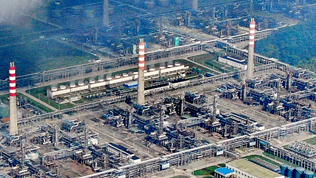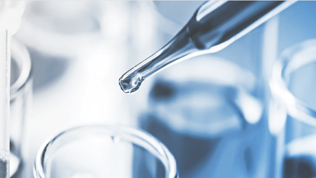Sinopec provides gasoline and diesel products of the following grades:
Gasoline
1. Automotive gasoline
A. 89# (Ⅵ), 92# (Ⅵ), 95# (Ⅵ), 98# (Ⅵ)
B. 89# (DB11/238), 92# (DB11/238), 95# (DB11/238)
2. Automotive ethanol gasoline
89# (E10) (Ⅵ), 92# (E10) (Ⅵ), 95# (E10) (Ⅵ), 98# (E10)
Diesel
1. Automotive diesel
A. 5# (Ⅵ), 0# (Ⅵ), -10# (Ⅵ), -20# (Ⅵ), -35# (Ⅵ), -50# (Ⅵ)
B. 5# (DB11/239), 0# (DB11/239), -10# (DB11/239), -20# (DB11/239), -35# (DB11/239)
2. B5 automotive diesel
5# (Ⅵ), 0# (Ⅵ), -10# (Ⅵ)
Basic knowledge of gasoline products
Gasoline is generally a water-white transparent liquid that is primarily used as a fuel in spark-ignition engine (i.e., gasoline engine), with a density of between 0.720 to 0.775 g/cm3 and a special aroma. It is divided into aviation gasoline and automotive gasoline by purpose. Gasoline sold in gas stations is generally automotive gasoline and automotive ethanol gasoline (E10). The current standard for automotive gasoline products in China is GB 17930 Code of Gasoline for Motor Vehicles, in which the gasoline is graded into 89#, 92#, 95# and 98#. The current standard for automotive ethanol gasoline (E10) is GB 18351 Code of Ethanol Gasoline for Motor Vehicles (E10), in which the ethanol gasoline is graded into 89#, 92#, 95# and 98#. The gradings of aforementioned types of gasoline are both based on research octane number.
Requirements of gasoline used for motor vehicles
1. Good anti-knock properties;
2. Proper evaporation;
3. Good anti-oxidation stability;
4. Good corrosion resistance and environment-friendly properties.
Items for gasoline quality assessment
Items for gasoline quality assessment include: anti-knock properties (research octane number, motor octane number, and anti-knock index), sulfur, vapor pressure, olefins, aromatics, benzene, corrosion, boiling range, etc.
How to choose different grades of gasoline?
Different grades of gasoline should be matched with the compression ratio of the engine. Low-grade gasoline used in the engine with high compression ratio may lead to knock of the engine, and longtime knock may cause faults such as piston sintering and piston ring breakage, accelerating the damage of engine components. If high-grade gasoline is used in engines with low compression ratio, although engine knock can be avoided, the ignition time might be changed, increasing carbon deposition in the cylinder and even shortening life of the engine with long-term use.
Basic knowledge of diesel products
Diesel is a water-white, light yellow or tan liquid. The diesel generally sold at gas stations is automotive diesel, which is primarily used as a fuel in compression-ignition engine. The current standard for automotive diesel products is GB 19147-2016 Code of Diesel for Motor Vehicles, in which diesel is graded into 5#, 0#, -10#, -20#, -35# and -50# based on their freezing points.
Requirements of light diesel used for diesel engines
The working process of diesel engine is essentially different from that of gasoline engine. Therefore, its quality requirements of fuel are also different from that of its gasoline counterpart. The requirements of diesel used for diesel engines are:
1. Good combustion performance;
2. Good fluidity at low temperature;
3. Proper evaporation;
4. Good stability;
5. Appropriate viscosity;
6. Good lubricity;
7. Good corrosion resistance.
Items for quality assessment of light diesel
Items for quality assessment of light diesel include: cetane number, oxidation stability, sulfur, chroma, acidity, ash, copper strip corrosion test, freezing point, cold filter plugging point, flash point, boiling range, lubricity, etc.
How to choose different grades of diesel for motor vehicles?
According to GB 19147-2016 Code of Diesel for Motor Vehicles, the following principles shall be followed when selecting different grades of diesel:
1. 5# light diesel is suitable for areas where the probability of the lowest temperature lower than 8℃ is no more than 10%;
2. 0# light diesel is suitable for areas where the probability of the lowest temperature lower than 4℃ is no more than 10%;
3. -10# light diesel is suitable for areas where the probability of the lowest temperature lower than -5℃ is no more than 10%;
4. -20# light diesel is suitable for areas where the probability of the lowest temperature lower than -14℃ is no more than 10%;
5. -35# light diesel is suitable for areas where the probability of the lowest temperature lower than -29℃ is no more than 10%;
6. -50# light diesel is suitable for areas where the probability of the lowest temperature lower than -44℃ is no more than 10%.

 Address
Address Post code
Post code Tel
Tel












 粤公網安備11123123223211
粤公網安備11123123223211